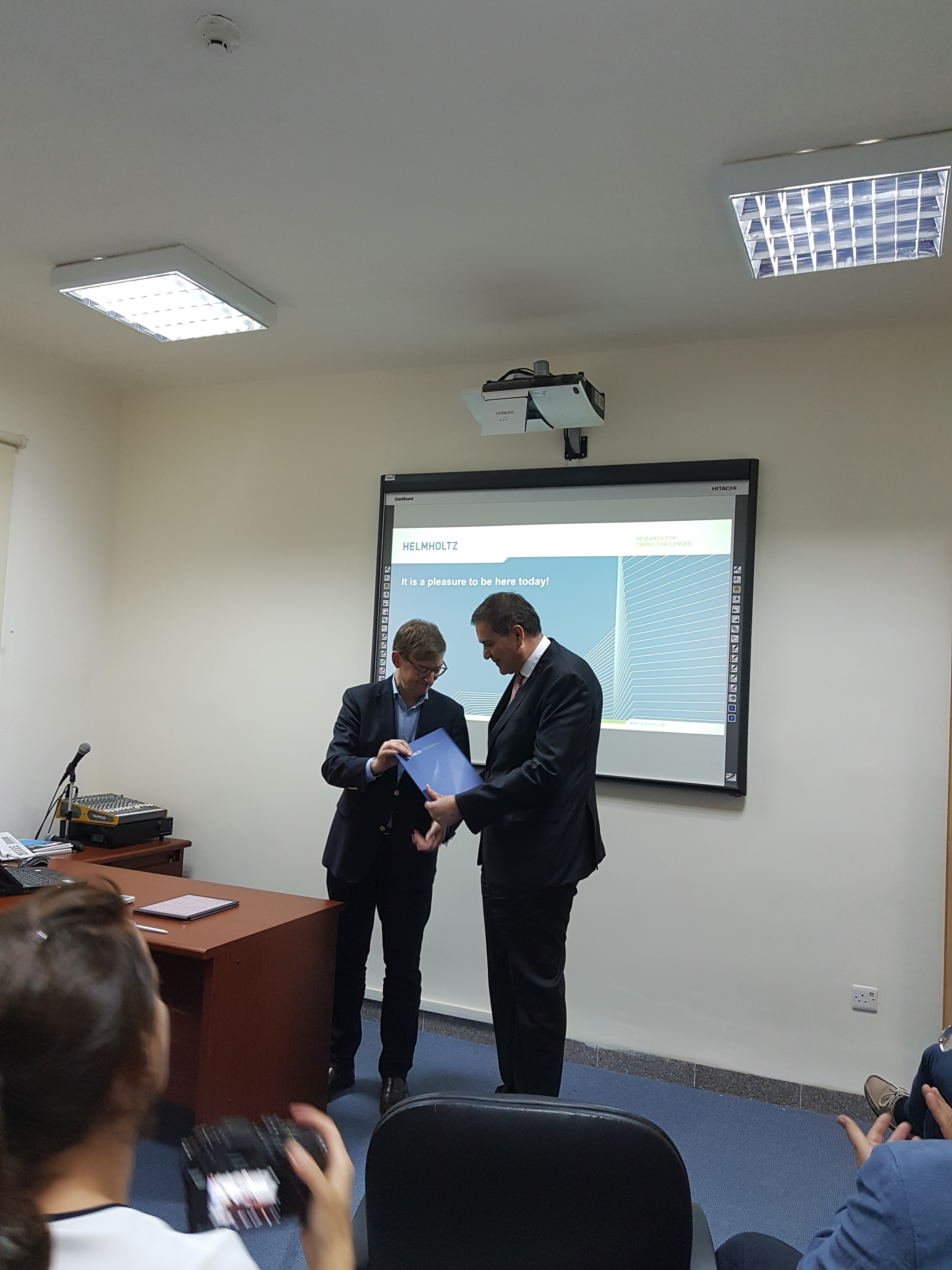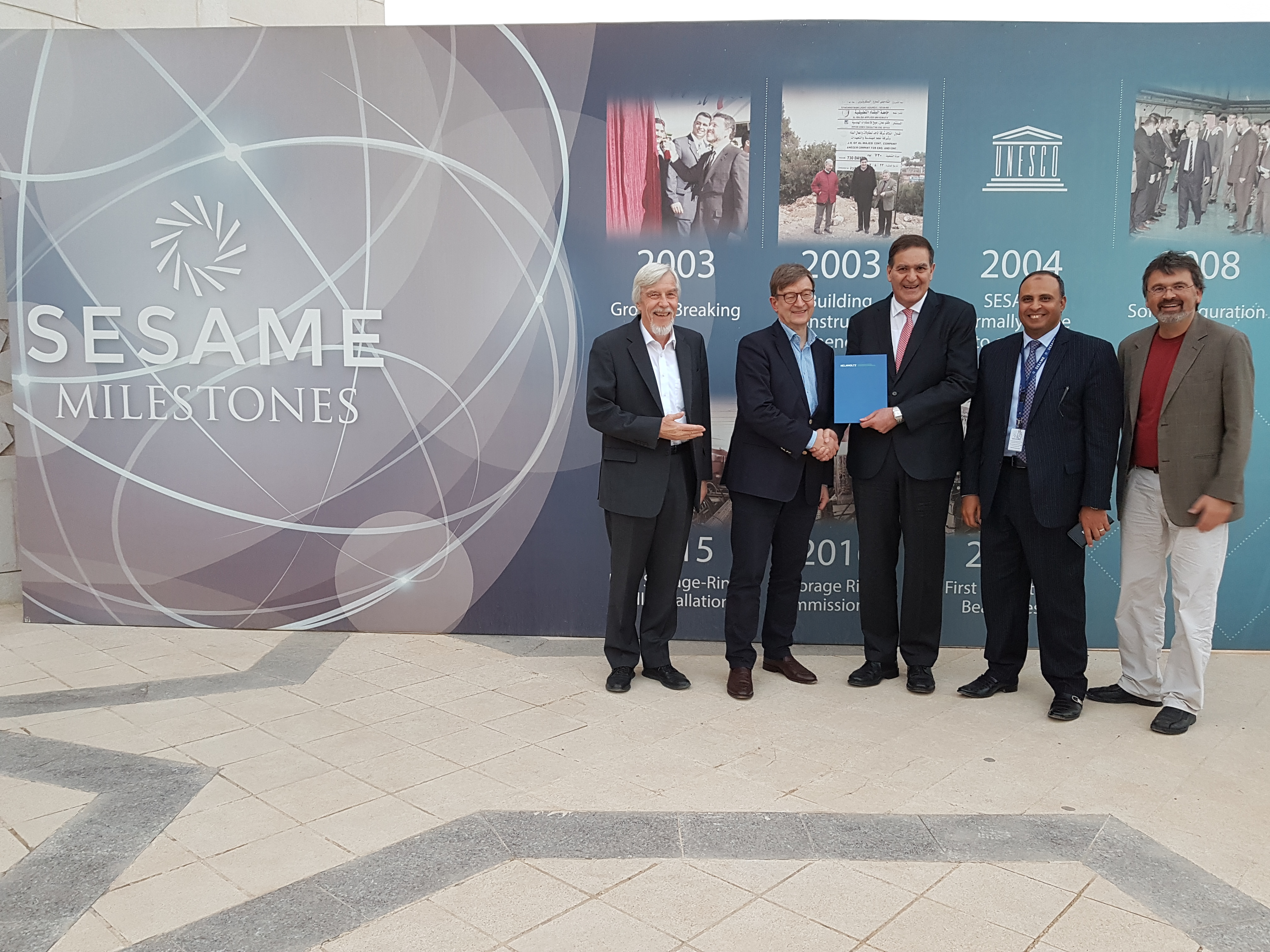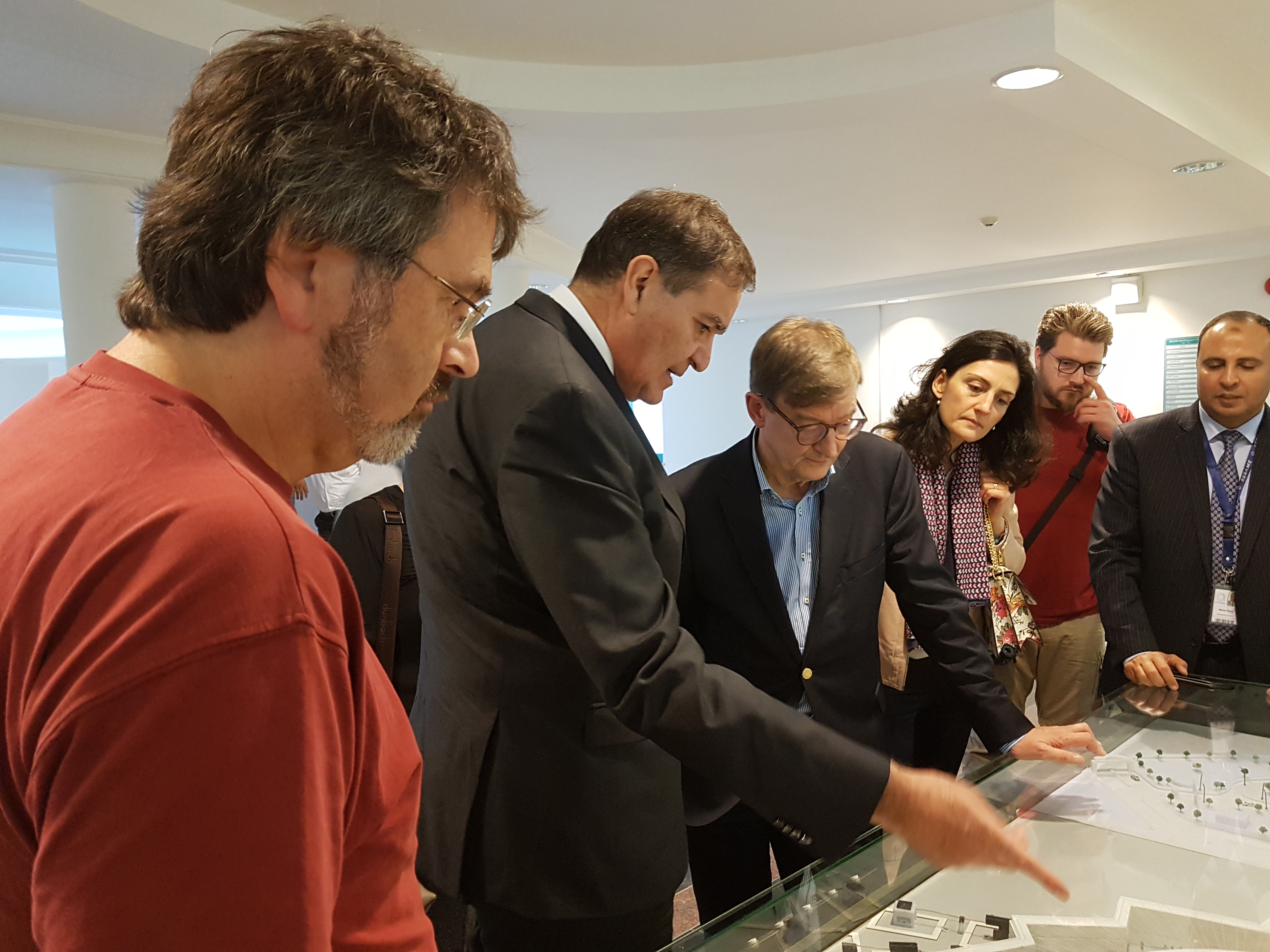
On 25 October, SESAME was host to a delegation from the Helmholtz Association of German Research Centres consisting of 43 persons. It was headed by Professor Otmar Wiestler, President of the Association.
The visiting delegation was shown round SESAME’s experimental hall and was able to see at first hand two of the Phase I beamlines that are already in operation, namely the XAFS/XRF (X-ray absorption fine structure/X-ray fluorescence) spectroscopy and IR (infrared) spectromicroscopy beamlines, as well as a further two Phase I beamlines, the MS (materials science) and MX (Macromolecular crystallography) beamlines, that are under construction and are expected to come on stream in two-three years.
During the visit, Otmar Wiestler informed SESAME that five research centres of the Helmholtz Association will be taking part in construction of a soft X-ray beamline for SESAME under the leadership of DESY (Deutsches Elektronen-Synchrotron). This is another of SESAME’s Phase I beamlines. The five research centres - DESY, FZJ (Forschungszentrum Jülich), HZB (Helmholtz-Zentrum Berlin), HZDR (Helmholtz-Zentrum Dresden-Rossendorf), and KIT (Karlsruher Institut für Technologie) - will be constructing a complete undulator beamline with monochromator and refocussing optics and a small chamber to conduct absorption and fluorescence yield experiments. The capital value of this work would be of the order of €3.5 million.
Given that the European Union has very recently informed SESAME that it will be providing €6 million for construction of its tomography beamline, SESAME will have six of its seven Phase I beamlines in operation relatively soon.
Germany has played an exceptionally important role in SESAME since it was its donation of the components of the BESSY I machine that was being decommissioned in Berlin that triggered the start of the SESAME project. The BESSY I microtron, which has been greatly upgraded, and booster synchrotron installed at SESAME provide the first two stages of acceleration – SESAME’s storage ring, constructed under the supervision of, and in collaboration with, CERN, is completely new. Other examples of Germany’s contribution are SESAME’s XAFS/XRF beamline which is based on the donated HZDR beamline, originally installed at the European Synchrotron Radiation Facility in Grenoble, that was adapted to the characteristics of SESAME, and several German scientists who have held high positions at SESAME.
At the close of the tour Otmar Wiestler congratulated the Director and his staff for what had been accomplished, and for the good spirit prevalent in the laboratory and the motivation of the young staff, which were both impressive. He expressed great satisfaction with the important role Germany is playing in the SESAME laboratory given that it will allow scientists from the region to carry out state-of-the-art research and help develop collaborative projects between scientists with diverse cultural, political and religious backgrounds.



